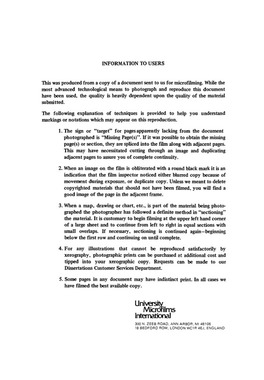| dc.contributor.author | Branscum, James D., | en_US |
| dc.date.accessioned | 2013-08-16T12:28:01Z | |
| dc.date.available | 2013-08-16T12:28:01Z | |
| dc.date.issued | 1980 | en_US |
| dc.identifier.uri | https://hdl.handle.net/11244/4716 | |
| dc.description.abstract | All of the variable groups perceived that the principals ideally should not be and really were not performing for the following three (3) general categories: financial management, school organization, and central and auxillary services. | en_US |
| dc.description.abstract | All groups perceived that the principals ideally should be and really were performing in the following four (4) general categories: community service and community relations, pupil personnel, pupil control; discipline and attendance, and personnel administration. | en_US |
| dc.description.abstract | The variable groups varied in their role expectations for the principals in the following five (5) general categories: student activities, working relationships with the central office personnel improvement, evaluation and planning of educational programs and research and development projects. | en_US |
| dc.description.abstract | Responses were recorded and divided into two categories, "real" (tasks that are actually performed, or what actually exist) and "ideal" (tasks that ideally should be performed, or what should exist). With the use of the Quadrant Assessment Model, a computer program developed by Dr. Larrie Gale, the comparison of the "real" to the "ideal" yielded information pertaining to the competencies of the principal. | en_US |
| dc.description.abstract | The following is a summary of the major findings of the study: | en_US |
| dc.description.abstract | The purpose of this study was to determine the in-role and role-partner perceptions of the competencies of the principalship, real and ideal, in the rural high schools of east central and southeastern Oklahoma. A randomly selected sample of seventy-five (75) superintendents, seventy-five (75) board members, seventy-five (75) teachers, and seventy-five (75) principals, from the identified population, responded to the perceptionnaire, Areas of Competence and Competency Statements for the Principalship. | en_US |
| dc.description.abstract | It was concluded that areas of agreement and disagreement exist among the variable groups concerning the role expectations of the secondary school principals and that there are more areas of agreement than of disagreement. It was also concluded that the possible conflict between the variable groups are in the areas of central office relations, personnel, educational program improvement, and research development. | en_US |
| dc.format.extent | 115 leaves ; | en_US |
| dc.subject | Education, Secondary. | en_US |
| dc.title | A study of the perceptions of rural secondary principals in east central and southeastern Oklahoma regarding the high school principalship. | en_US |
| dc.type | Thesis | en_US |
| dc.thesis.degree | Educat.D. | en_US |
| dc.thesis.degreeDiscipline | Jeannine Rainbolt College of Education | en_US |
| dc.note | Source: Dissertation Abstracts International, Volume: 41-03, Section: A, page: 1013. | en_US |
| ou.identifier | (UMI)AAI8018919 | en_US |
| ou.group | Jeannine Rainbolt College of Education | |
